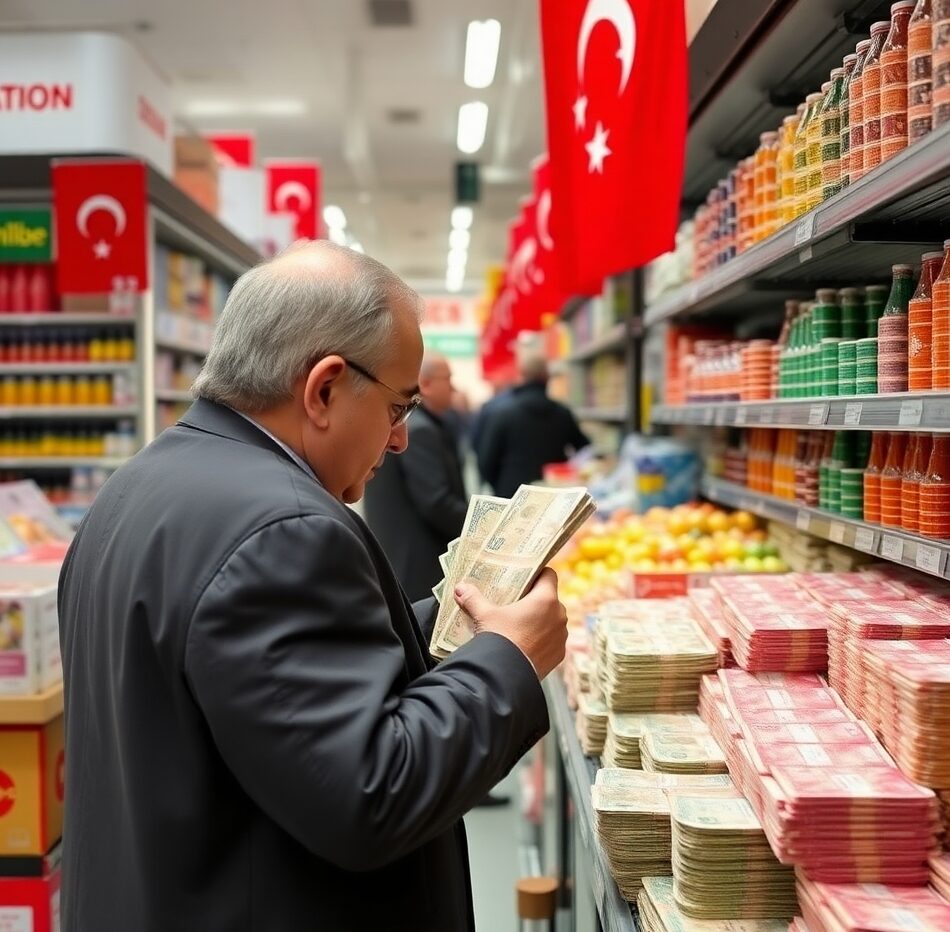
In a surprising twist, Turkey’s inflation rate ended 2024 at 44.4%, significantly lower than analysts had projected. Throughout the year, the Turkish economy had faced a variety of challenges, from soaring inflation rates to volatility in the currency markets. However, the final months of 2024 brought hope for recovery. This article explores the factors behind the unexpected inflation reduction, what this means for Turkey’s economy, and how the country’s fiscal and monetary policies are shaping its future.
This drop in inflation is noteworthy, as it signals potential stability and an opportunity for economic recovery after months of uncertainty. By understanding the causes of this decline and analyzing the broader impact on Turkey’s economy, citizens, and global investors, we can anticipate how the nation will navigate its economic challenges in the years to come.
Turkey’s Inflation in 2024: A Year in Review
Initial Struggles in Early 2024
At the beginning of 2024, inflation remained a serious concern for Turkey, with high rates continuing to erode household purchasing power and undermine consumer confidence. Economic analysts had warned that inflation would remain a major obstacle for the Turkish economy, particularly given the persistent devaluation of the Turkish lira and rising costs of imports, including energy and food.
Mid-Year Outlook and Government Response
Mid-2024 saw the government making significant efforts to curb inflationary pressures. These measures included changes to monetary policy and fiscal interventions. However, inflation remained sticky throughout the year, peaking as high as 49% in the summer months. Despite these challenges, government officials remained hopeful that inflation would start to decline in the second half of the year.
By November, inflation stood at 47.09%. The expectation was that this trend would continue into December, but the actual result was better than anticipated, marking a clear turning point for the Turkish economy. By December, the inflation rate fell sharply to 44.4%, surprising many economists and raising questions about what had caused this significant decline.
Key Factors Contributing to the Easing of Inflation
Several critical factors contributed to the unexpected reduction in Turkey’s inflation rate. Below, we explore these elements in detail.
1. Central Bank’s Interest Rate Cuts
One of the most significant actions taken by the Turkish government in 2024 was the decision to cut the key interest rate. In December 2024, the Turkish Central Bank reduced its interest rate by 250 basis points, bringing it down to 47.5%. This marked the first rate cut since March 2024, signaling a shift in the bank’s policy.
The rate cut was a response to the slowing inflation rate, and it was intended to stimulate economic activity and encourage investment. Lower interest rates typically lead to lower borrowing costs, which can help boost consumption and investment. However, the central bank’s move was met with both support and skepticism. While many economists believed it was a necessary step to prevent the economy from stalling, others feared that the move could lead to renewed inflationary pressures.
2. Stabilization of the Turkish Lira
The Turkish lira had been under intense pressure throughout 2024, with fluctuations in its value contributing to high inflation. As the value of the lira depreciated, the cost of imports increased, which was passed on to consumers through higher prices on goods such as food, fuel, and electronics.
However, towards the end of 2024, the Turkish government took steps to stabilize the lira. By securing favorable trade agreements and bolstering foreign exchange reserves, the lira stabilized, preventing further dramatic devaluation. This stabilization reduced the pressure on import costs, which played a key role in curbing inflation. With the lira less volatile, the price of imported goods remained more stable, and inflationary pressures were relieved.
3. Government Fiscal Measures
In addition to the central bank’s interest rate cuts, the Turkish government implemented several fiscal measures to address inflation. One of the most important of these was the moderation of fuel tax hikes, which had been driving up the cost of transportation and heating for Turkish citizens.
By scaling back fuel tax increases, the government managed to contain the rising costs of fuel, which helped keep inflation in check. Additionally, a significant 30% increase in the minimum wage was introduced to support workers and improve their purchasing power, mitigating some of the inflationary effects that had been felt by low-income families.
These fiscal measures aimed not only to control inflation but also to alleviate some of the immediate financial pressures on the Turkish population. The government hoped that these actions would promote greater consumer confidence and spur economic growth by increasing disposable income.
4. Global Economic Factors
While domestic factors played a significant role in Turkey’s inflation decline, global economic conditions also influenced the country’s inflation trajectory. Turkey, as an emerging market economy, is highly sensitive to fluctuations in global commodity prices, especially in oil and natural gas.
Throughout 2024, global energy prices remained relatively stable, which helped keep Turkey’s energy import costs under control. Moreover, international supply chain disruptions, which had caused inflationary spikes in the past, began to ease towards the end of the year. As global supply chains recovered and logistical issues were resolved, the cost of imported goods began to fall, further contributing to the overall reduction in inflation.
Impact of Inflation Easing on Turkey’s Economy
Positive Effects on Consumer Confidence
One of the most immediate effects of the reduction in inflation is the boost to consumer confidence. As inflation decreases, Turkish households face less pressure on their daily expenses. This has a direct impact on consumer behavior, as people are more likely to spend money when they feel that prices are stabilizing.
With inflation at 44.4%, Turkish citizens are expected to see a gradual improvement in their purchasing power. The easing of inflation, combined with the minimum wage increase, means that more disposable income is available for everyday spending. This improvement in consumer confidence is crucial for economic recovery, as consumer spending is a key driver of Turkey’s GDP.
Challenges for Turkish Businesses
While inflation has eased, Turkish businesses still face challenges. Rising wages, especially after the minimum wage increase, have led to higher operational costs. Moreover, many businesses that rely on imports are still vulnerable to fluctuations in global prices, particularly in sectors like technology, automotive, and energy.
Additionally, businesses must navigate the impact of any future interest rate hikes or other monetary policy changes by the central bank. If inflation begins to rise again, companies may face challenges in maintaining profitability without passing on higher costs to consumers.
Looking Ahead: Turkey’s Economic Outlook for 2025
The inflation rate decline in 2024 provides hope for Turkey’s future, but the road ahead is not without obstacles. Government officials are cautiously optimistic about the economic outlook, with Finance Minister Mehmet Simsek forecasting that inflation will fall further, reaching 26.5% by the end of 2025.
However, achieving this target will depend on a variety of factors, including:
1. Continuing Stabilization of the Lira
The Turkish economy will need to ensure that the lira remains stable against the dollar and other major currencies. If the currency depreciates again, inflation could quickly rise. The Turkish government must continue to implement measures to stabilize the currency, including improving foreign exchange reserves and securing favorable trade agreements.
2. Managing Global Economic Uncertainties
Turkey’s economic outlook will also depend on external factors, including global commodity prices, geopolitical risks, and international trade conditions. Any disruptions in the global supply chain or spikes in energy prices could put upward pressure on inflation, threatening Turkey’s progress in reducing it.
3. Structural Reforms
In addition to short-term measures, Turkey will need to focus on long-term structural reforms to ensure sustained economic growth. These could include enhancing the efficiency of the labor market, improving productivity, and investing in sectors that drive innovation and competitiveness.
Turkey’s inflation rate easing to 44.4% at the end of 2024 represents a significant step forward for the country’s economy. While the reduction is encouraging, it is clear that there are still challenges ahead. By focusing on stabilizing the currency, implementing sound fiscal policies, and navigating the global economic landscape, Turkey has the potential to achieve further inflation reductions in 2025.
As the government continues to manage the economy, both domestic and international factors will play a critical role in shaping the country’s economic future. By carefully navigating these challenges, Turkey can continue on its path toward economic recovery and stability.
Feel free to check out our other website at : https://synergypublish.com


